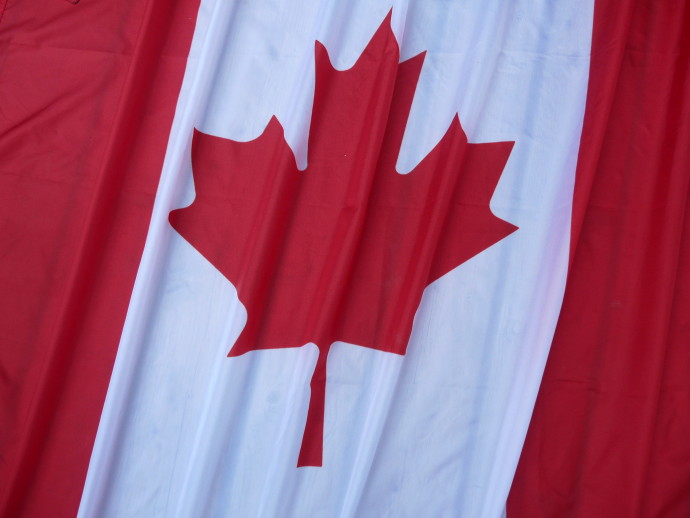January 3, 2015
FLAG @ 50 : 10 things to know + take CBC’s FLAG QUIZ!
By

Try this Quiz from cbc.ca: http://www.cbc.ca/news/multimedia/how-well-do-you-know-canada-s-flag-take-the-quiz-1.2954493
Then read this article on
Ten other things you need to know about the Canadian Flag
The House Committee received almost 6,000 proposals from Canadians for the new flag and then narrowed it down to 19. The committee’s choice was then further adjusted to be the final flag chosen by Pearson.
By ANDREW CARDOZO |
Published: Monday, 02/09/2015 12:00 am EST
1. The Maple Leaf flag came into effect on Feb. 15, 1965, 50 years ago, and was raised on the front lawn of Parliament Hill by then-governor general Georges Vanier at 12 noon on that day.
2. Lester B. Pearson first proposed a new flag in the Liberal general election platform of 1962, an election he lost to the Progressive Conservatives led by John Diefenbaker. He promised it again in the 1963 election, the election he won, and began working on a new flag shortly after.
3. Key dates:
• Pearson’s resolution to create the new flag was introduced in the House of Commons on June 15, 1964.
• The House Committee on The Flag came to a final decision on Oct. 22, 1964.
• The bill creating the flag was passed in the House of Commons in the early hours of Dec. 15, 1964, by a vote of 163 to 78 following one of the most raucous national debates of that period. The supporters included the Liberals, Tommy Douglas and the New Democrats and Quebec MPs from the Progressive Conservative Party. Diefenbaker and the rest of the PC Party voted against it.
• The bill received royal assent on Jan. 28, 1965, given by Queen Elizabeth in London in the presence of Pearson and Diefenbaker. The two Canadian leaders were also in London for the funeral of Winston Churchill.
4. John Matheson, the then-Liberal MP from Brockville, Ont., was the MP perhaps most committed to a new flag besides Pearson and took a leading role in guiding the bill through Parliament. He was also an expert on matters of national symbols and heraldry and, as such, was relied upon for his expertise.
5. Pearson made his first speech on his proposed new flag in the lion’s den—the annual meeting of the Royal Canadian Legion who were the strongest opponents of any change. His speech was interrupted by boos and heckling several times, but Pearson was unfazed.
6. The House Committee received almost 6,000 proposals from Canadians for the new flag and then narrowed it down to 19. The committee’s choice was then further adjusted to be the final flag chosen by Pearson.
7. In 1996, the government of Jean Chrétien designated Feb. 15 as the National Flag of Canada Day, generally known now as Flag Day.
8. The Canadian Red Ensign version of the flag, which preceded the current flag, was actually never authorized by Parliament, only by an order in council (Cabinet decision) in 1924. It just started being used in an unofficial way in the 1920s and a bit more during World War II on land and on ships. The shield on it was an amalgam of provincial emblems.
9. Red and white were approved as Canada’s official colours in 1921 by King George V, and it was not until 1957 that the three little maple leaves in the bottom of the shield on the Red Ensign were changed from green to red.
10. The five people most intimately involved in the design (the precise colours, the proportions, and the 11 point maple leaf that became the flag) were Pearson, MP John Matheson, federal commissioner for exhibitions Patrick Reid, Reid’s senior designer Jacques Saint-Cyr, a strong Quebec nationalist, and Joan O’Malley, a seamstress who was the daughter of one of Reid’s employees. She is said to have worked on it all night for a showing at Harrington Lake and from what history records, is perhaps the only woman (besides the Queen) who played a key role in the story of the flag—the one who actually made it!
Sources: Lester B. Pearson, Words and Occasions; Rick Archbold, I Stand for Canada, The Story of the Maple Leaf Flag; Peter Stursberg, Lester Pearson and the Dream of Unity; Mitchell Sharp, Which Reminds Me; Mauril Belanger, History of the Canadian Flag (poster) www.mauril.ca; Andrew Cohen; Wikipedia.
Andrew Cardozo is president of the Pearson Centre for Progressive Policy.
news@hilltimes.com
The Hill Times



